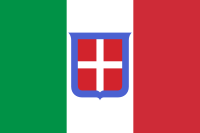
The following is a list of historical military colours, standards and guidons in different countries that do not exist today.

The Alpini are the Italian Army's specialist mountain infantry. Part of the army's infantry corps, the speciality distinguished itself in combat during World War I and World War II. Currently the active Alpini units are organized in two operational brigades, which are subordinate to the Alpine Troops Headquarters. The Alpini's name comes from their inceptive association with the Alps, the mountain range that Italy shares with France, Switzerland, Austria, and Slovenia. An individual soldier of the Alpini is called Alpino.

The uniforms of the British Army currently exist in twelve categories ranging from ceremonial uniforms to combat dress. Uniforms in the British Army are specific to the regiment to which a soldier belongs. Full dress presents the most differentiation between units, and there are fewer regimental distinctions between ceremonial dress, service dress, barrack dress and combat dress, though a level of regimental distinction runs throughout.

The 4th Alpine Division "Cuneense" was a division of the Royal Italian Army during World War II, which specialized in mountain warfare. The headquarters of the division was in the city of Cuneo, and the majority of its Alpini soldiers were drafted from the surrounding Province of Cuneo - hence the division's name "Cuneense". The division participated in all Italian World War II campaigns with the exception of the North African Campaign. The division was annihilated during Operation Little Saturn by Soviet forces in January 1943.

The Alpine Brigade "Julia" is a light infantry brigade of the Italian Army, specializing in mountain warfare. Its core units are Alpini, an infantry corps of the Italian Army, that distinguished itself during World War I and World War II. The brigade carries on the name and traditions of the 3rd Alpine Division "Julia". The division's and brigade's name allude to the Julian Alps in the Friuli region where the division's regiments recruited their troops, and where after World War II the brigade was based. Accordingly, the brigade's coat of arms is modeled after the Friuli region's coat of arms.
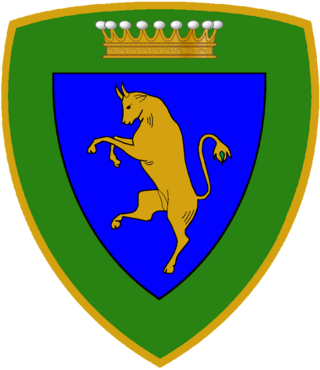
The Alpine Brigade "Taurinense" is a light Infantry brigade of the Italian Army, specializing in Mountain Combat. Its core units are Alpini, the mountain infantry corps of the Italian Army, that distinguished itself in combat during World War I and World War II. The brigade's name "Taurinense" alludes to the Roman name Augusta Taurinorum for the city of Turin around which the brigade is based. Accordingly the brigade's coat of arms is modeled after Turin's coat of arms. The brigade carries on the name and traditions of the 1st Alpine Division "Taurinense".

The 4th Mountain Artillery Regiment is an inactive mountain artillery regiment of the Italian Army, which was based in Susa in Piedmont. The regiment was formed in 1934 by the Royal Italian Army with mountain artillery groups that had served in World War I. The regiment was assigned to the 4th Alpine Division "Cuneense", with which it served during World War II in the invasion of France and the Greco-Italian War. In summer 1942 the division was transferred to the Soviet Union, where it was destroyed in winter 1942-43 during the Soviet Operation Little Saturn. The remnants of the division were repatriated in spring 1943 and invading German forces disbanded the division and its regiments after the announcement of the Armistice of Cassibile on 8 September 1943.
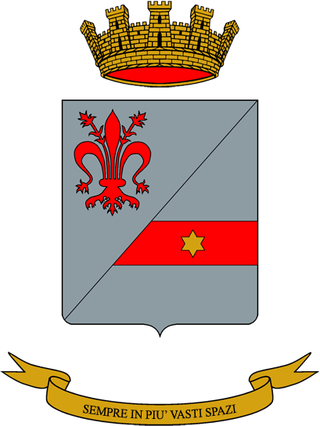
The 2nd Alpine Signal Regiment is a deployable signals regiment of the Italian Army based in Bolzano in South Tyrol that specializes in mountain warfare. Since 1951 it has been assigned of the 4th Alpine Army Corps and therefore a strong association with the army's mountain infantry speciality, the Alpini, with whom the regiment shares the distinctive Cappello Alpino. The unit was first active from 1926 to 1932 as 2nd Radio-Telegraphers Regiment.

The Alpini are a mountain infantry corps of the Italian Army, that distinguished itself in combat during World War I and World War II. They are also famous in Italy for their songs and choirs.

The 3rd Alpine Division "Julia" was a division of the Royal Italian Army during World War II, which specialized in mountain warfare. The Alpini that formed the divisions are a highly decorated, elite mountain corps of the Italian Army comprising both infantry and artillery units. Today the traditions and name of the 3rd Alpine Division "Julia" are carried on by the Alpine Brigade "Julia".
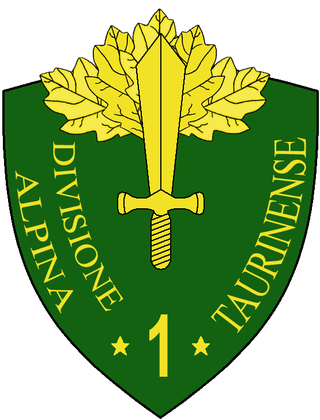
The 1st Alpine Division "Taurinense" was a division of the Royal Italian Army during World War II, which specialized in mountain warfare. The Alpini that formed the division are a highly decorated and elite mountain corps of the Italian Army consisting of both infantry and artillery units. Today, the traditions and name of the 1st Alpine Division "Taurinense" are carried on by the Alpine Brigade "Taurinense". The headquarters of the division was in the city of Turin and the majority of its soldiers were drafted from the surrounding Province of Turin — therefore the division was named "Taurinense" for the Roman name of the city of Turin Augusta Taurinorum.

The 2nd Alpine Division "Tridentina" was a division of the Royal Italian Army during World War II, which specialized in mountain warfare. The Alpini that formed the divisions are a highly decorated and elite mountain corps of the Italian Army comprising both infantry and artillery units. The name Tridentina was chosen as the division was based in the Trentino-South Tyrol region, for which the fascist regime of Benito Mussolini had created the neologism Venezia Tridentina. After World War II, the traditions and name of the 2nd Alpine Division "Tridentina" were carried on by the Alpine Brigade "Tridentina".

The Comando Truppe Alpine or COMTA commands the Mountain Troops of the Italian Army, called Alpini and various support and training units. It is the successor to the 4º Corpo d'Armata Alpino of the Cold War. The Alpini are light Infantry units specializing in Mountain Combat. The subordinate units of the COMTA distinguished themselves during combat in World War I and World War II.
The military uniforms of the Union Army in the American Civil War were widely varied and, due to limitations on supply of wool and other materials, based on availability and cost of materials. The ideal uniform was prescribed as a dark blue coat with lighter pants, with a black hat. Officer's ranks were denoted with increasing levels of golden decoration. Specific jobs, companies, and units had markedly different styles at times, often following European customs such as that of the Zouaves. Officers uniforms tended to be highly customized and would stray from Army standard. Ironically, several main pieces of gear had been created by order of the U.S. War Secretary Jefferson Davis before the war; he later became Confederate President.

Troops began wearing berets as a part of the headgear of military uniforms in some European countries during the 19th century; since the mid-20th century, they have become a component of the uniforms of many armed forces throughout the world. Military berets are usually pushed to the right to free the shoulder that bears the rifle on most soldiers, but the armies of some countries, mostly within Europe, South America, and Asia, have influenced the push to the left.
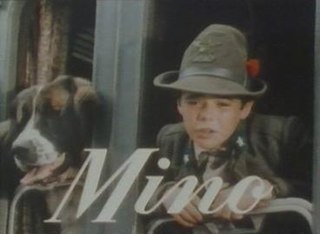
Mino was the eighth ZDF-Weihnachtsserie, and aired in 1986. The series was broadcast in Germany on ZDF, and consisted of 6 episodes. Broadcasting in Germany began on December 25, 1986. The series was also broadcast in Italy, and consisted of 4 episodes. Broadcasting in Italy began on December 28, 1986. The series was an Italian-German co-production. It was inspired by the Italian novel The little Alpino by Salvator Gotta.

The uniforms of the Italian Armed Forces include the official dress worn by members of the Italian Armed Forces while on duty. Each of the branches of the Italian Armed Forces, the Italian Army, the Italian Navy, the Italian Air Force, and the Carabinieri Corps, maintains its own style of dress. The Italian Armed Forces have an extensive history, during which they have undergone changes in the equipment they use, and the military uniforms they wear.

The 182nd Armored Infantry Regiment "Garibaldi" is an inactive unit of the Italian Army last based in Sacile in Friuli Venezia Giulia. The regiment was part of the Italian Army's infantry arm and was last assigned to the Infantry Division "Folgore".

Italian Army gorget patches are worn by all army personnel on the collars of the shirts and jackets of their service uniforms and formal uniforms. The gorget patches identify the arm, corps, or speciality within an arm or corps a soldier belongs to. Generals wear golden stars instead of a gorget patches, while army recruits wear silver stars until they are assigned to a unit after basic training. Originally made from colored cloth, respectively embroidered cloth for Granatieri, Carabinieri and general staff members, gorget patches have been made since 1973 from enamelled metal.

The Mountain Artillery Group "Asiago" is an inactive mountain artillery group of the Italian Army, which was based in Toblach in South Tyrol. The group consisted of mountain artillery batteries, had been formed in December 1914 and served in World War I on the Italian front. During World War II the batteries were assigned to the Alpine Artillery Group "Val Camonica" of the 2nd Alpine Artillery Regiment "Tridentina", which distinguished itself on the Eastern Front. The Mountain Artillery Group "Asiago" was formed in 1952 and assigned to the 2nd Mountain Artillery Regiment of the Alpine Brigade "Tridentina". In 1975 the group became an autonomous unit and was granted a flag and coat of arms. After the end of the Cold War the group was disbanded in 1991.

